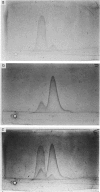Abstract
A possible relationship between activation of the alternative pathway of complement and acid hydrolase secretion by macrophages has been investigated in vitro by examining the dose--response characteristics of several immunological and non-immunological stimuli of these two processes. Zymosan particles, insoluble immune complexes, methylamine and several other primary aliphatic monoamines were all found to elicit the selective release of lysosomal enzymes from macrophages by a process that correlated well with the ability of these agents to bring about consumption of haemolytically-active components of the alternative complement pathway. By contrast, substances which failed to activate the alternative complement pathway, i.e. soluble aggregated immunoglobulin and several primary aliphatic diamines, were found to be likewise incapable of inducing the selective release of lysosomal glycosidases from macrophages. These observations are interpreted as further evidence for imputing a role for complement C3 in the initiation of lysosomal enzyme release from macrophages.
Full text
PDF
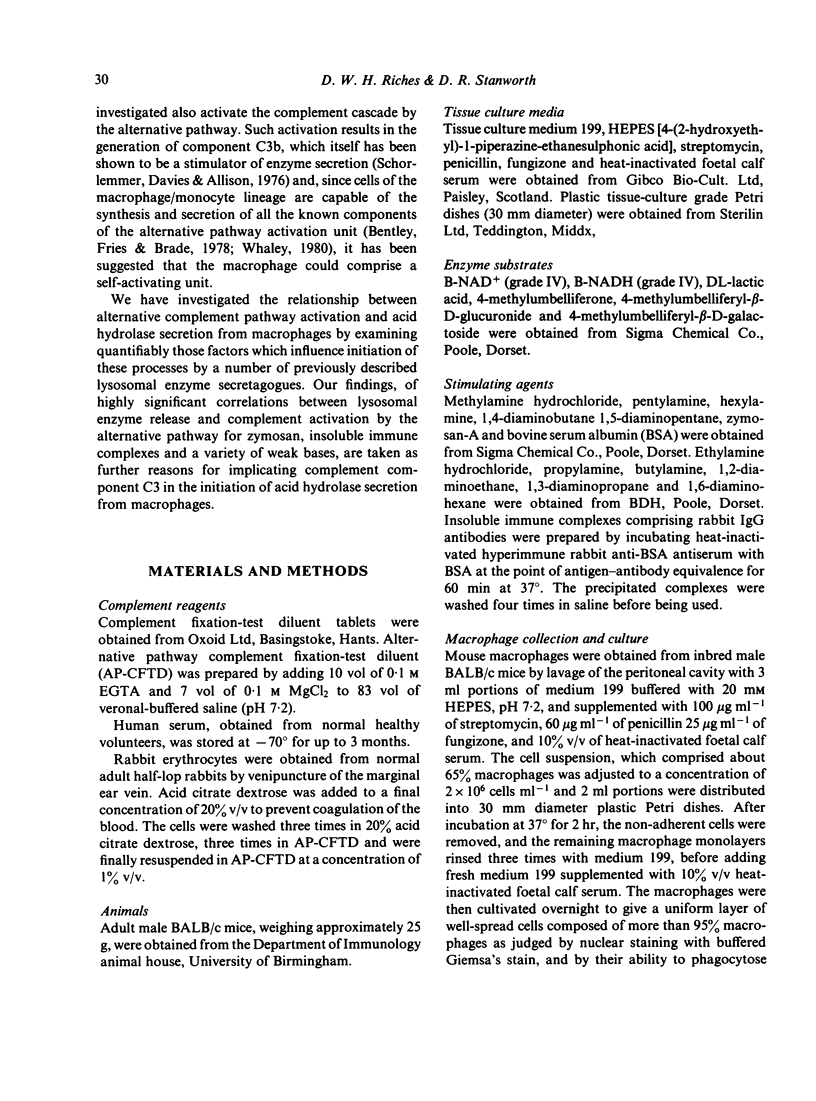
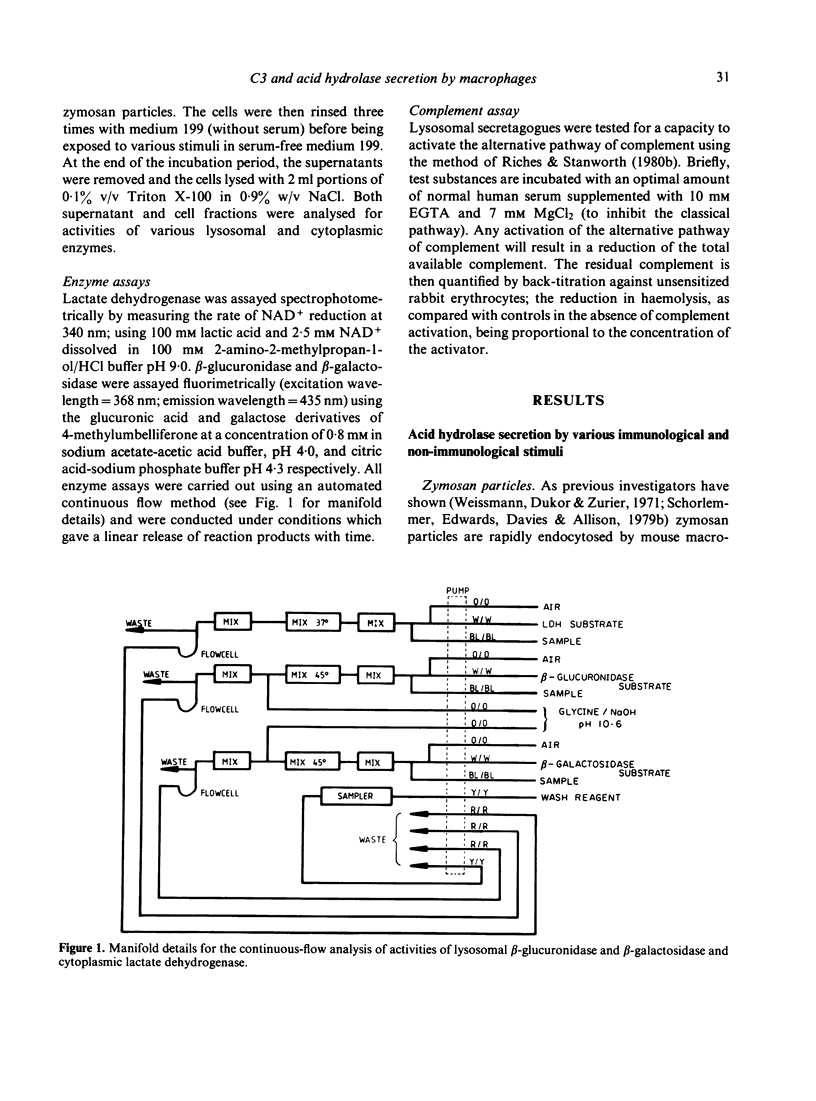
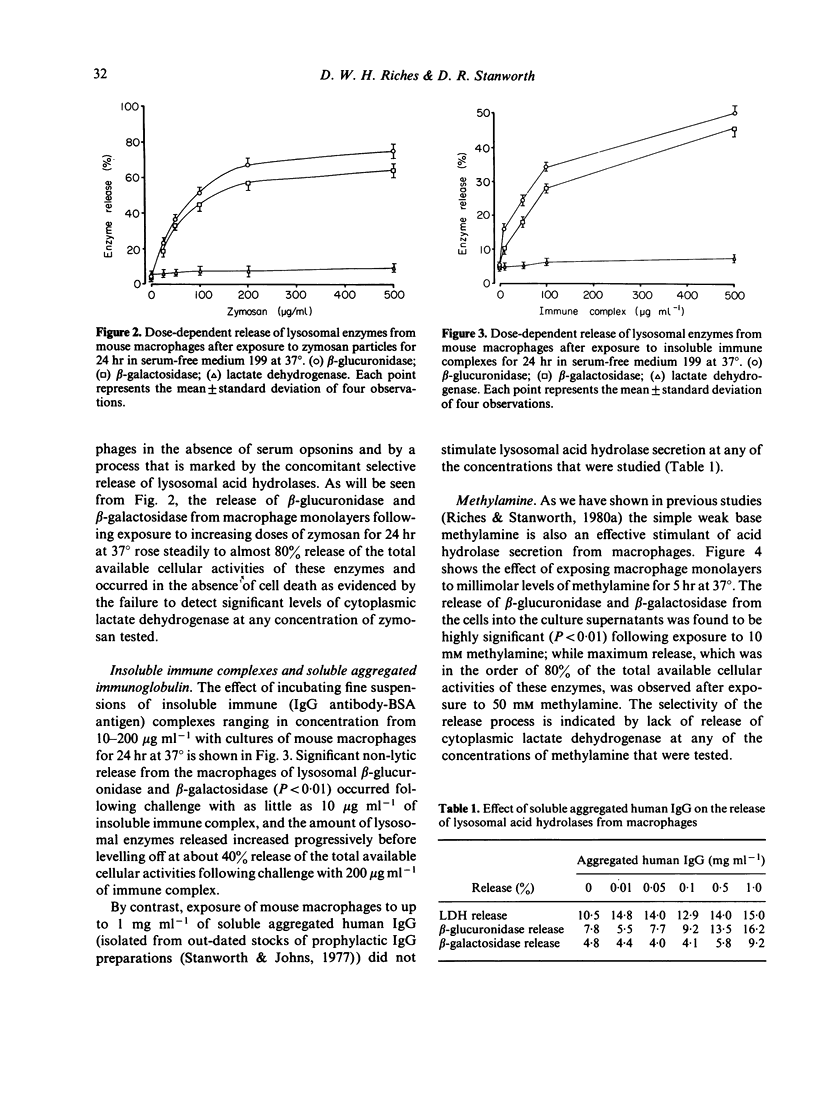
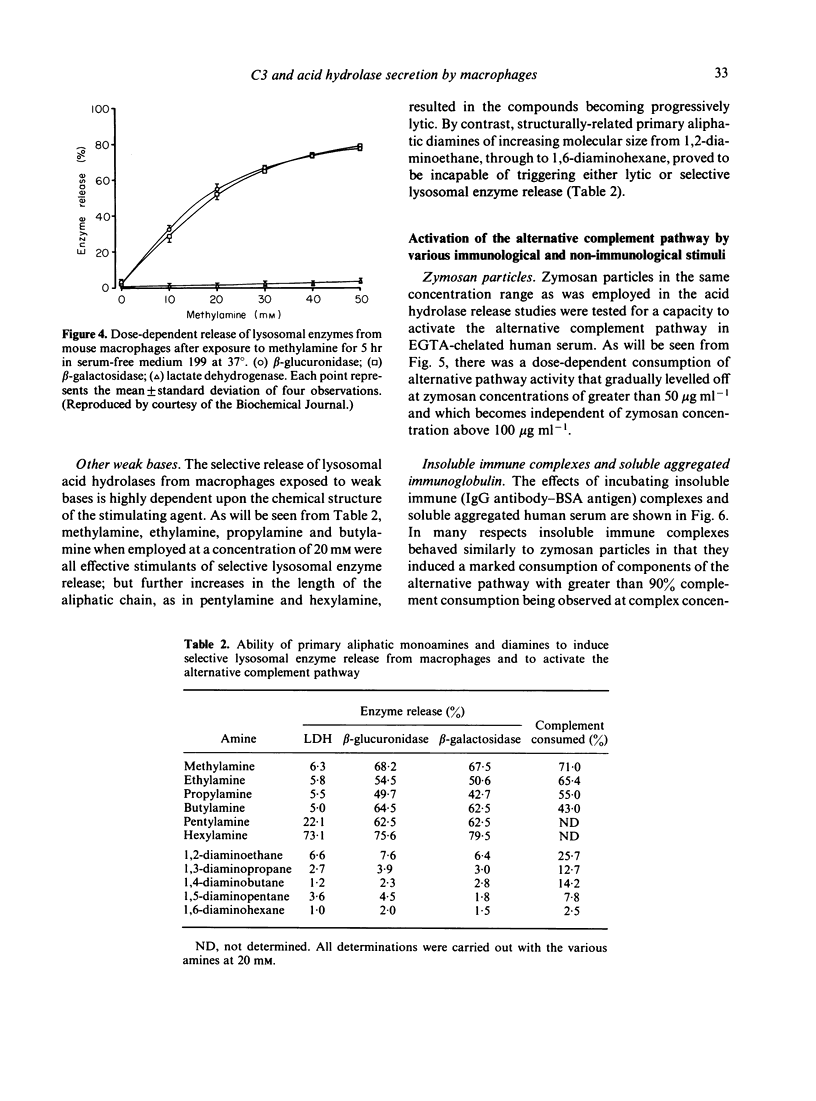
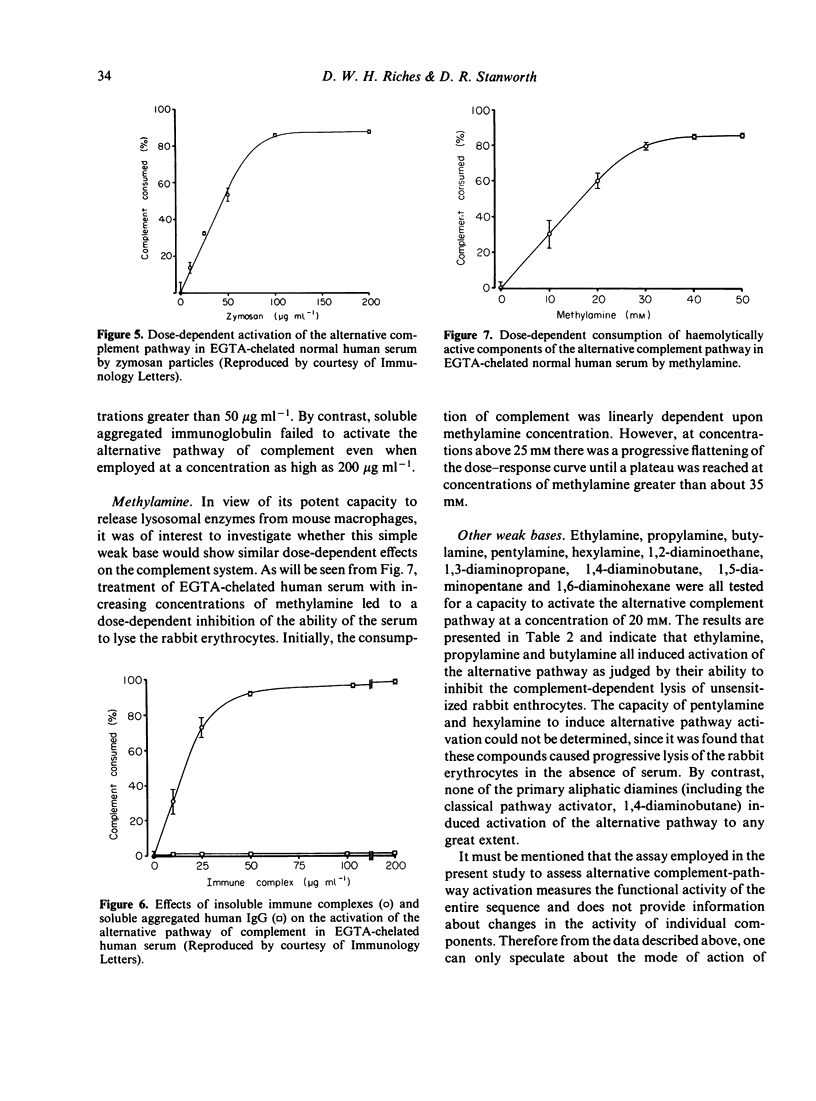
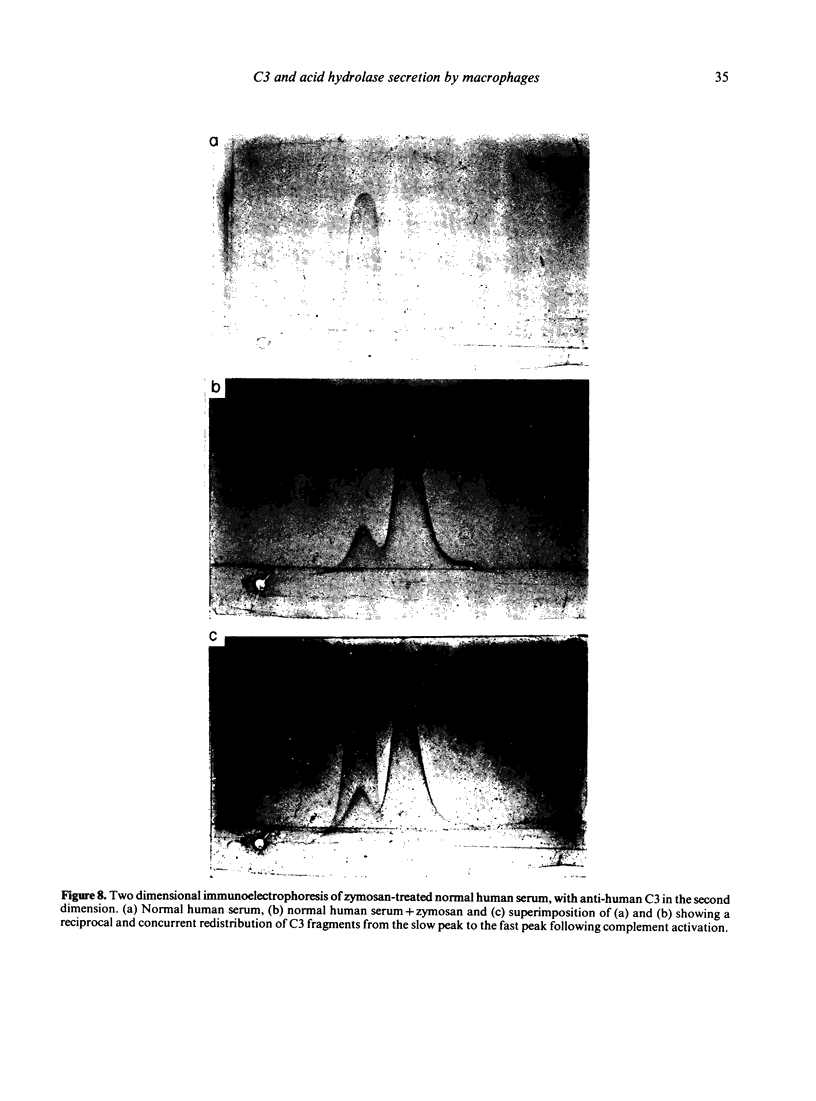
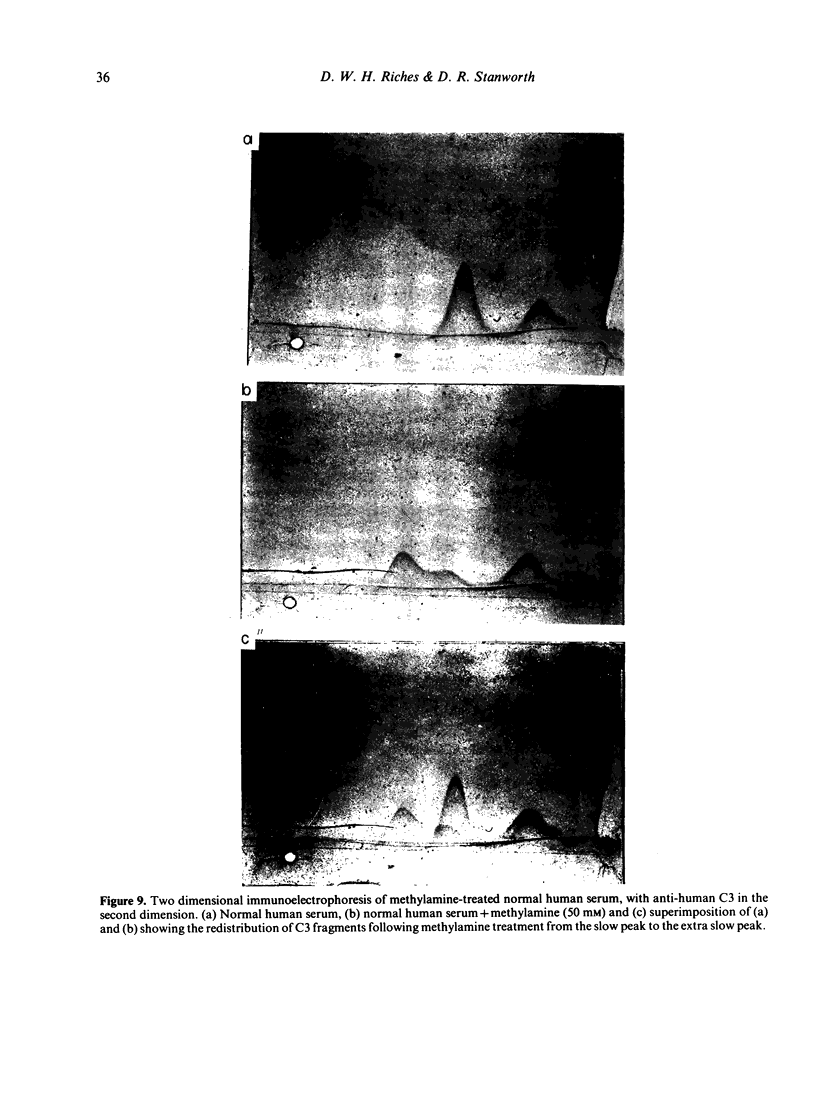
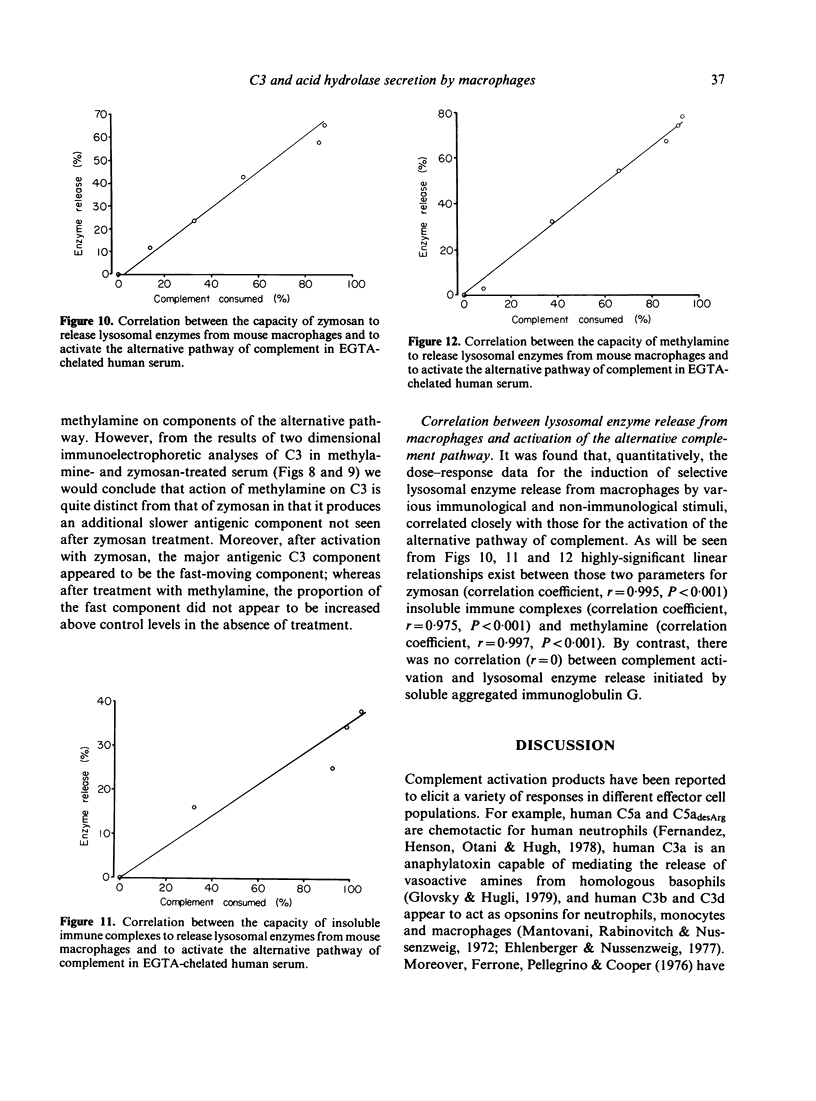
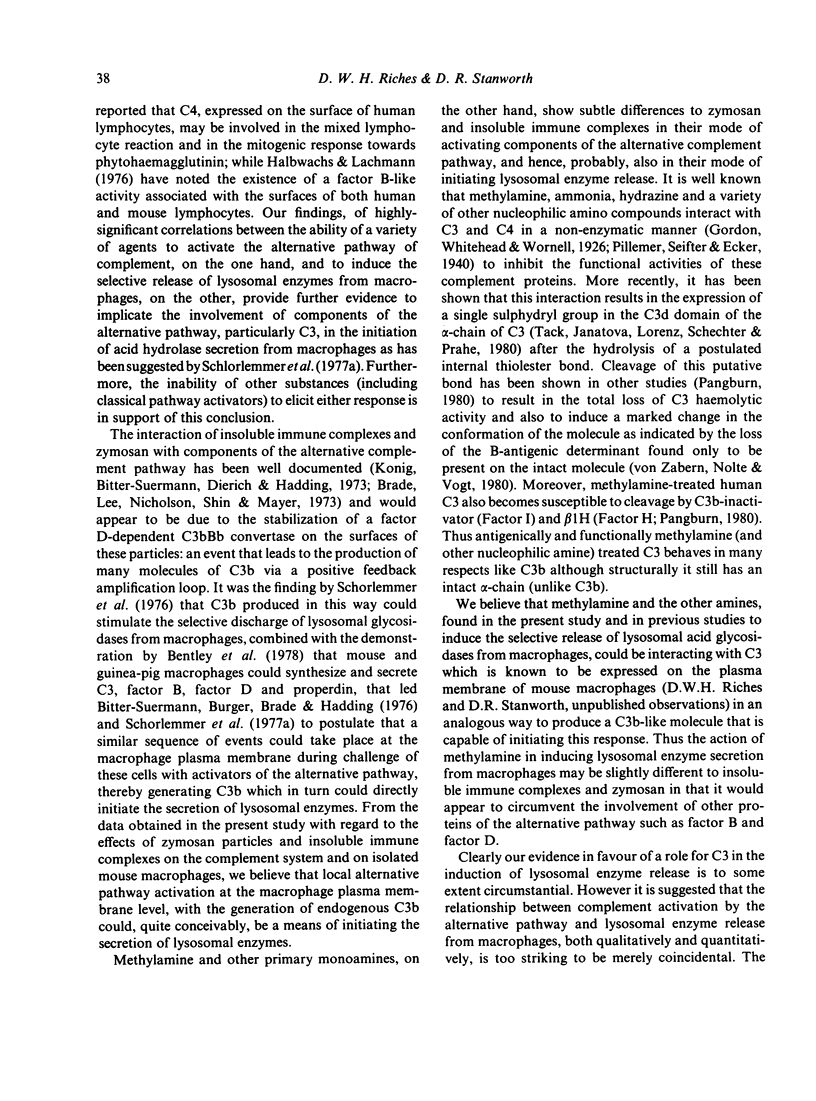
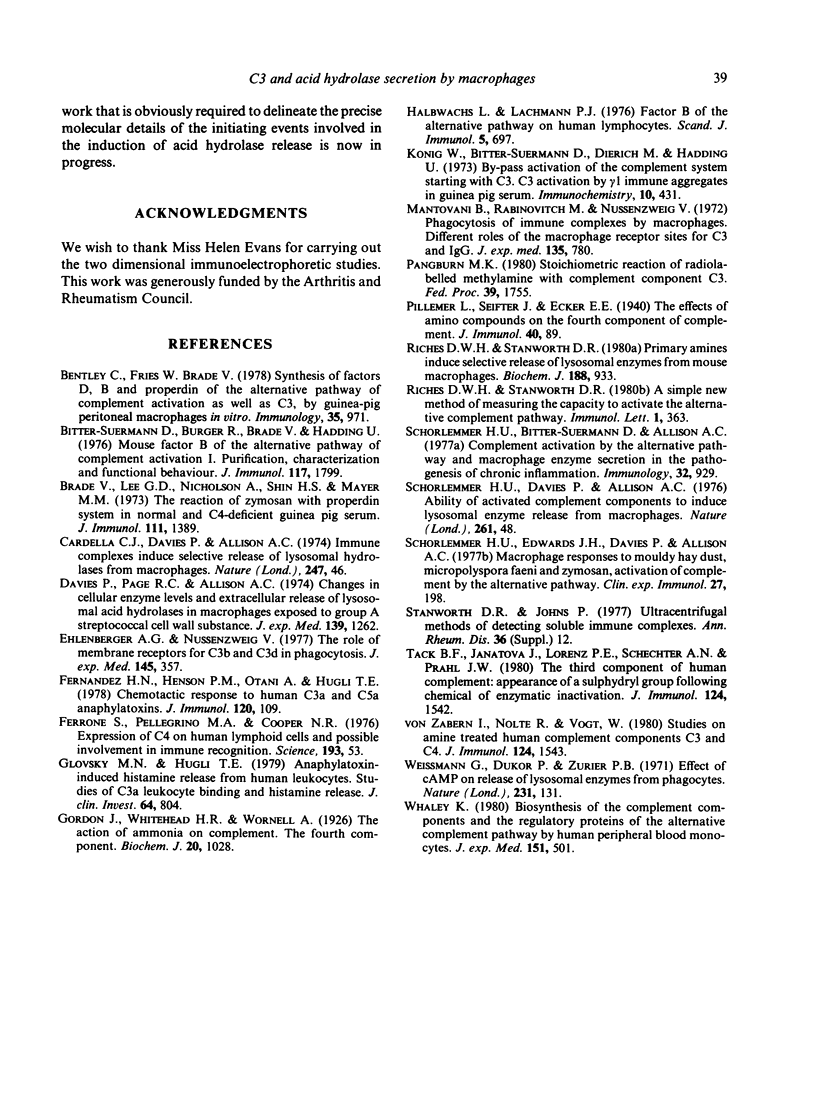
Images in this article
Selected References
These references are in PubMed. This may not be the complete list of references from this article.
- Bentley C., Fries W., Brade V. Synthesis of factors D, B and P of the alternative pathway of complement activation, as well as of C3, by guinea-pig peritoneal macrophages in vitro. Immunology. 1978 Dec;35(6):971–980. [PMC free article] [PubMed] [Google Scholar]
- Bitter-Suermann D., Burger R., Brade V., Hadding U. Mouse factor B of the alternative pathway of complement activation. I. Purification, characterization, and functional behavior. J Immunol. 1976 Nov;117(5 PT2):1799–1804. [PubMed] [Google Scholar]
- Brade V., Lee G. D., Nicholson A., Shin H. S., Mayer M. M. The reaction of zymosan with the properdin system in normal and C4-deficienct guinea pig serum. Demonstration of C3- and C5-cleaving multi-unit enzymes, both containing factor B, and acceleration of their formation by the classical complement pathway. J Immunol. 1973 Nov;111(5):1389–1400. [PubMed] [Google Scholar]
- Davies P., Page R. C., Allison A. C. Changes in cellular enzyme levels and extracellular release of lysosomal acid hydrolases in macrophages exposed to group A streptococcal cell wall substance. J Exp Med. 1974 May 1;139(5):1262–1282. doi: 10.1084/jem.139.5.1262. [DOI] [PMC free article] [PubMed] [Google Scholar]
- Ehlenberger A. G., Nussenzweig V. The role of membrane receptors for C3b and C3d in phagocytosis. J Exp Med. 1977 Feb 1;145(2):357–371. doi: 10.1084/jem.145.2.357. [DOI] [PMC free article] [PubMed] [Google Scholar]
- Fernandez H. N., Henson P. M., Otani A., Hugli T. E. Chemotactic response to human C3a and C5a anaphylatoxins. I. Evaluation of C3a and C5a leukotaxis in vitro and under stimulated in vivo conditions. J Immunol. 1978 Jan;120(1):109–115. [PubMed] [Google Scholar]
- Glovsky M. M., Hugli T. E., Ishizaka T., Lichtenstein L. M., Erickson B. W. Anaphylatoxin-induced histamine release with human leukocytes: studies of C3a leukocyte binding and histamine release. J Clin Invest. 1979 Sep;64(3):804–811. doi: 10.1172/JCI109527. [DOI] [PMC free article] [PubMed] [Google Scholar]
- Gordon J., Whitehead H. R., Wormall A. The Action of Ammonia on Complement. The Fourth Component. Biochem J. 1926;20(5):1028–1035. doi: 10.1042/bj0201028. [DOI] [PMC free article] [PubMed] [Google Scholar]
- Halbwachs L., Lachmann P. J. Factor B of the alternative complement pathway on human lymphocytes. Scand J Immunol. 1976;5(6-7):697–704. doi: 10.1111/j.1365-3083.1976.tb03019.x. [DOI] [PubMed] [Google Scholar]
- König W., Bitter-Suermann D., Dierich M., Hadding U. Bypass-activation of the complement system starting with C3. II. C3-activation by gamma-1-immune aggregates in guinea pig serum. Immunochemistry. 1973 Jul;10(7):431–437. doi: 10.1016/0019-2791(73)90012-8. [DOI] [PubMed] [Google Scholar]
- Mantovani B., Rabinovitch M., Nussenzweig V. Phagocytosis of immune complexes by macrophages. Different roles of the macrophage receptor sites for complement (C3) and for immunoglobulin (IgG). J Exp Med. 1972 Apr 1;135(4):780–792. doi: 10.1084/jem.135.4.780. [DOI] [PMC free article] [PubMed] [Google Scholar]
- Riches D. W., Stanworth D. R. Primary amines induce selective release of lysosomal enzymes from mouse macrophages. Biochem J. 1980 Jun 15;188(3):933–936. doi: 10.1042/bj1880933. [DOI] [PMC free article] [PubMed] [Google Scholar]
- Schorlemmer H. U., Bitter-Suermann D., Allison A. C. Complement activation by the alternative pathway and macrophage enzyme secretion in the pathogenesis of chronic inflammation. Immunology. 1977 Jun;32(6):929–940. [PMC free article] [PubMed] [Google Scholar]
- Schorlemmer H. U., Edwards J. H., Davies P., Allison A. C. Macrophage responses to mouldy hay dust, Micropolyspora faeni and zymosan, activators of complement by the alternative pathway. Clin Exp Immunol. 1977 Feb;27(2):198–207. [PMC free article] [PubMed] [Google Scholar]
- Weissmann G., Dukor P., Zurier R. B. Effect of cyclic AMP on release of lysosomal enzymes from phagocytes. Nat New Biol. 1971 Jun 2;231(22):131–135. doi: 10.1038/newbio231131a0. [DOI] [PubMed] [Google Scholar]
- Whaley K. Biosynthesis of the complement components and the regulatory proteins of the alternative complement pathway by human peripheral blood monocytes. J Exp Med. 1980 Mar 1;151(3):501–516. doi: 10.1084/jem.151.3.501. [DOI] [PMC free article] [PubMed] [Google Scholar]



